Water. At some point in social studies classes, we stop learning about water and start learning about economics, history, and even a bit of geography. Water winds up reserved for science experiments and sips from the drinking fountain down the hallway. I never really understood why. Humans and the earth are made mostly of water. We need to drink it to survive, and the land needs it to thrive. I’ve always been one of those people who are drawn to water wherever I am. Crashing waves, babbling brooks, roaring rivers, or trickling tributaries - I’m always drawn to water. Send me to a city and even in a New England winter I’ll find the seaside marina or waterfront park. But the road directly to my heart is the ocean.
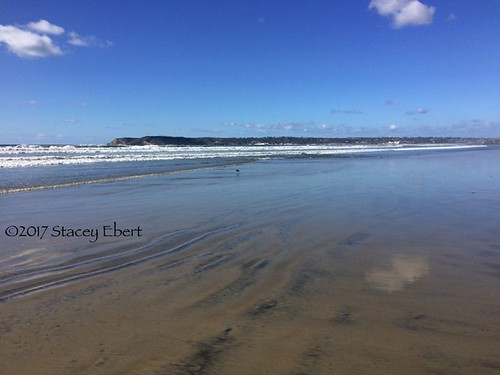
In New York public schools, we learned there are four main oceans. Decades later, I met my husband (who is Australian) and he told me I was wrong. He was right. There are five: Atlantic, Pacific, Indian, Arctic, and Southern. Providing benefits farther reaching than our eyes and Instagram feeds can ever imagine, the oceans greet us at the shores and share their world with us. The ocean has much to teach, if only we are ready to listen. Whether you’re a budding marine biologist, an animal whisperer, a lover of killer whales, or a fan of that salty, sea air, the ocean shares her wisdom with all of humankind.
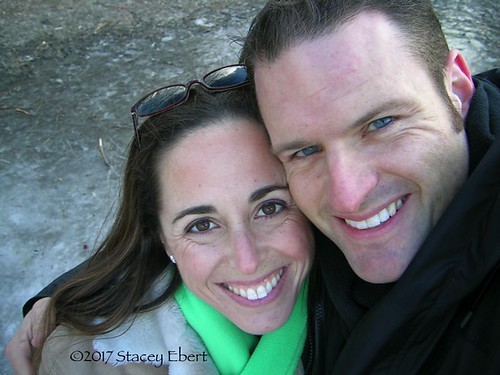
I’ve always wondered why the subject of water left the educational curriculum at an early age. It is strange, as water makes up much of the earth’s surface, connects peoples and cultures around the globe, and provides a source of life for billions. When we leave our own communities by way of education or travel, when we think globally, and when we take the environment into consideration, water becomes a tool for educational learning. Kids that grow up on the coast might have one idea of ‘what to do in the summer’, while those who grew up further inland could have a different idea. Sharing the benefits of everyone’s water interaction provides cultural diffusion, enhances cultural diversity, and in the more extreme cases of drought, scarcity, or lack of availability and access, teaches empathy and helps to create global citizens willing to work towards the greater good for all. It’s always been hard to draw myself away from the ocean, but the water world is filled with lessons.
There are places nearby and around the world with struggling infrastructure, chemical infringements, and lack of access. There are places where people walk kilometers to get water, while others turn on a tap for as long as they choose. There are communities where people are forced to buy bottled water while continuing to pay for water that’s not safe to drink. And there are others who live within a fingertip’s reach and take the availability for granted. The benefits and struggles are real. Water is a necessity, and being able to learn from it while finding joy in the journey is priceless.
There’s magic in bodies of water both large and small. I remember clearly the first moment my toes dipped into Israel’s Red Sea. Within moments, I was scuba diving and waving to meandering dolphins and colorful fish. Hours later, covered in the healing properties of Dead Sea mud, I found myself floating along the tops of the dark and salty sea. Lesson one of the Dead Sea: if you shave that morning or find yourself with a cut, you’ll know. Although the salt content will clear your wounds of any sort of infection, the level of discomfort is apparent - yet the experience far outweighs the pain. There are other bodies of water similar to that of the Dead Sea, where many skincare companies go to study and or recreate the natural properties of the healing salts and muds for younger looking everything. Amidst the seas, budding scientists and epidemiologists will find incredible principles of education amidst the hours of water-related fun.
Then there are the lakes. A visit to Chicago finds Lake Michigan. I remember my surprise when I looked out the window of the car and it was right there. Growing up around a salt-laden, wave-crashing ocean is different from a lake. When approaching an ocean, you can often smell the salty sea air and hear the boom of the crashing waves well before setting eyes on the wide-open horizon. Fresh water lakes are often quieter and let off less pungent aromas. Step into Lake Michigan, and you can see your toes. Step into Lake Superior, and that might not be the case. Either way, those Great Lakes connect a huge array of land and people and are a part of a winding web of waterway transport. Coupled with river access, watercrafts move around the world with ease. Those seafaring men and women know that the levels of each body of water are not the same and it often takes the help of a boatlift (in the form of a lock and dam) to make that smooth transition.
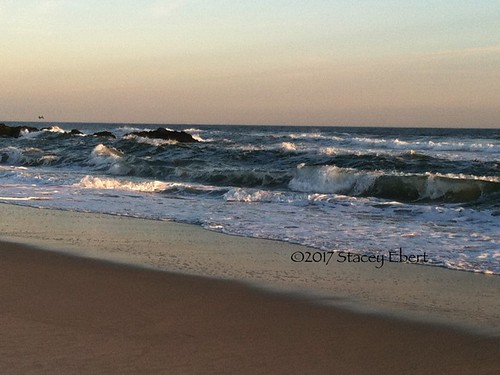
I saw my first lock and dam in Minneapolis, Minnesota, home to none other than lock and dam number one on the mighty Mississippi River. Having spent more time around oceans than rivers or lakes, this entire process was fascinating to me. Similarly to humans using an elevator to reach a higher floor in a building, boats use the lock and dams to change water levels from lower to higher or reverse. Mechanically crafted and precisely engineered, this ingenious invention allows a constant flow of access regardless of the water’s heights. Used by the likes of the paddle steamers that hang in the port of New Orleans and traverse their way through the middle of the United States, rivers and their locks and dams help the flow of goods and services, connect cultures and communities, and provide sustenance and life along their waves.
Large or small, when the temperature drops, lakes often freeze. Communities living around those lakes use that frozen period for all sorts of informal educational enjoyment. There are icehouses, ice fishing, and actual parties on ice. There are all sorts of sporting endeavors, from curling to skating to hockey and more. My husband had never seen a large body of frozen water. After three decades of living in a land directly under a hole in the ozone layer, he took his timid first steps on the frozen pond in Boston Commons. Although we were surrounded by kids of all ages playing hockey and skating up a storm, the fact of standing atop frozen water was astonishing to him. Learning can happen at any age, at any rate, and in any place. If you’ve ever played atop the ice, you have a body of water to thank.
I’ve spent the most time on the oceans on either side of the United States. I’m familiar with the August arrival of jellyfish on the Long Island shores of the Atlantic, and the stronger undertows and drifts off the southern California shores of the Pacific. But, as an educator and a traveler, learning and seeing new bodies of water has never lost its effect on me. I stood in awe at Western Australia’s Cape Leeuwin as I caught my first glimpse of the Southern Ocean where it joins with that of the Indian. I donned a stinger suit to keep me safe while taking in the wonder that is Australia’s Great Barrier Reef. I was amazed by the clarity of the Indian Ocean off the coast of Africa’s Zanzibar, and I stood for what seemed hours at Cape Reigna on the northern coast of New Zealand where the Tasman Sea swirled with the southern Pacific Ocean. We all didn’t even have to see the likes of Finding Nemo or Finding Dori to know that thousands of species of wildlife make their home in the world’s beautiful oceans.
The world has atolls in the Indian Ocean, archipelagos in the Pacific, and remote islands speckled throughout the globe. Water breathes life to the planet and life to humans. On a journey to southern Africa, we met the San People of Namibia. One of the youngest members of the native people eyed one of my small bottles of water and smiled the entire time he drank from it. He had trouble holding it and when I asked why, the answer was far more educational than I had imagined. The San People live off the land. They interact with others from time to time, but their everyday is filled with hunting, gathering, and community. The four year old was very used to independently drinking water but the vessel typically used is an ostrich eggshell. Narrower, more flexible and less sturdy than the ostrich eggshell, the unfamiliar water bottle was harder for this child to manage on his own.
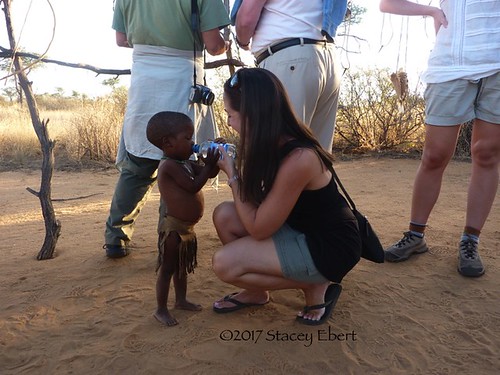
Skilled in finding a water source, tracking, and living a nomadic life, the San People regularly move around to find their food and water. There are many other communities around the world that can’t pick up and altogether leave, but instead, have to seek out water daily and carry it back to their family. Far more difficult than those who have access to clean water with the twist of a tap, communities across the globe are still, today, fighting for access and the right to clean water. Within the past year, the United States has seen struggles with water and access. Whether discussing lead in Flint, Michigan, drought in California, or the right to clean water in North Dakota, water continues to be a topic of global conversation, providing endless opportunities for educational discourse.
I’ve always been a water kid. Take me away from the proximity to open water and I feel a bit lost. Drop me somewhere and ask me where I’d like to go, and the answer traditionally is some place of open water and open sky. Regardless of the fact that water is rarely a topic of conversation in our secondary school classrooms, water is always a conversation in our daily lives. Your doctor asks you how much water you drink. Your yoga instructor touts the benefits of flotation tanks and hydrotherapy. Your therapist discusses the health benefits of the sea and the mindfulness and meditative properties of the constant flow of the ocean waves. Whether you’re seeking therapeutic education, sharing the joy of mammalian life under the sea, finding out how boats can make their way from one body of water to another, or actually believe you’re a mermaid, the world’s water provides lessons far beyond that of our classrooms.
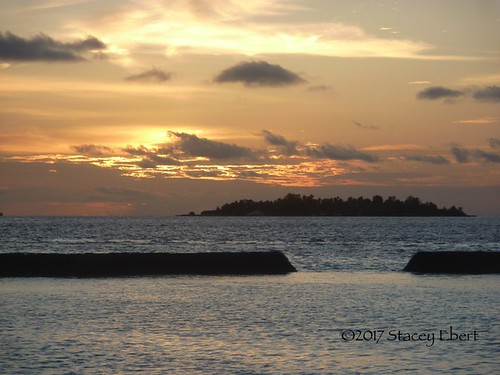
Stacey Ebert, our Educational Travels Editor, is a traveler at heart who met her Australian-born husband while on a trip in New Zealand. Stacey was an extracurricular advisor and taught history in a Long Island public high school for over fifteen years, enjoying both the formal and informal educational practices. After a one year 'round the world honeymoon, travel and its many gifts changed her perspective. She has since left the educational world to focus on writing and travel. She is energetic and enthusiastic about long term travel, finding what makes you happy and making the leap. In her spare time she is an event planner, yogi, dark chocolate lover, and spends as much time as possible with her toes in the sand. Check out her website at thegiftoftravel.wordpress.com for more of her travel musings.
All photos courtesy and copyright Stacey Ebert
